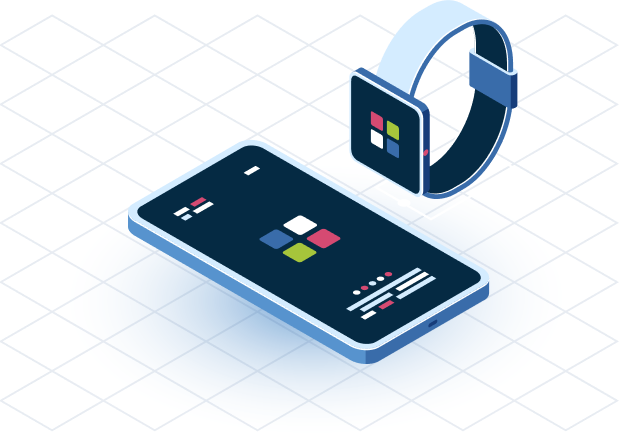
We work with non-technical founders, entrepreneurs, and business leaders who have great visions but need help in evaluating their ideas and building them into successful software products and platforms. We work with our clients to understand and internalize their vision, customers, competitors, risks, and business goals. As a cross-functional product team, we take complete ownership of the product and deliver on the immediate needs while building a strong and scalable foundation for a long-term vision.
Discovery & Ideation
Let's dive deeper into each aspect of discovery and ideation
Evaluate the potential success of a software idea by conducting thorough market research, competitor analysis, and seeking feedback from potential users. Ensure demand, feasibility, and viability are assessed to establish a strong foundation for development.
Clearly articulate and document the functional and non-functional specifications, features, and constraints of the software project. This stage establishes a comprehensive understanding of what needs to be built to meet business objectives.
Explore and define the product's scope, objectives, and features. Identify key user needs and pain points. This stage involves in-depth research and analysis to ensure a comprehensive understanding of the product requirements before development begins.
Intervene in an existing project to improve code quality, fix bugs, and enhance performance. Code rescue aims to address issues in ongoing development, ensuring that the software project is on a solid foundation for further advancement.
Conduct a comprehensive review of the technology stack, infrastructure, and overall technical architecture. Tech audits identify strengths, weaknesses, and areas for improvement, ensuring the technology foundation aligns with the project's goals and industry best practices.
Product Strategy
KUWAITNET focuses on the high-level plan and approach that guides the development, positioning, and growth of a product or service, which encompasses the overall direction and goals of the product, as well as the decisions and actions taken to achieve those goals. A well-defined product strategy aligns the product with the market, customer needs, and business objectives, and serves as a roadmap for its success. Here's a breakdown of each aspect of product strategy in software engineering.

KUWAITNET conducts thorough market analysis to align the product with market dynamics, customer needs, and business objectives.
Strategic planning at involves creating a roadmap that guides product development, positioning, and growth, defining the overall direction and goals.
We emphasize prioritization in product strategy, ensuring decisions and actions align with defined goals, directing resources to key features for optimal development and growth.
KUWAITNET integrates product analytics to inform decision-making, utilizing data to refine strategies, enhance positioning, and achieve product success.
Experience Design
Experience Design, also known as UX (User Experience) Design, encompasses the process of creating meaningful and enjoyable experiences for users as they interact with a product or service. It involves understanding user needs, designing intuitive interfaces, and ensuring a seamless and engaging user journey.
User Research involves understanding the target audience's preferences, behaviors, and needs. Gathering insights helps create a user-centric design by aligning the website with the expectations and goals of its users.
systems
Product Design involves creating a cohesive set of design principles, components, and guidelines. In the context of web design, it ensures consistency across pages, creating a unified visual language and user experience.
User Experience (UX) and User Interface (UI) Design are integral to crafting a positive and visually appealing website experience. UX focuses on user journey and interactions, while UI ensures a visually cohesive and intuitive design. enhancing the overall usability and aesthetics.
Rapid Prototyping involves quickly creating interactive models of the website. It allows stakeholders to visualize the design, test functionality, and gather feedback early in the development process.
Minimum Viable Products
A Minimum Viable Product (MVP) is a version of a product that contains the core features and functionalities required to meet the basic needs of early users. The primary goal of an MVP is to quickly validate the product idea, gather user feedback, and test the product-market fit with minimal time and resources.
An MVP, representing your website concept, lets you test its viability. By developing a basic version, you validate assumptions, understand user needs, and assess market potential before committing significant resources, ensuring your strategy aligns with actual user expectations.
Early user acquisition involves attracting the initial audience to your website. By engaging this group, you gain valuable feedback, understand user behavior, and refine your site based on real-world usage patterns, setting the foundation for future growth.
Evaluate how well your website aligns with the market by assessing user satisfaction and demand. Testing product-market fit ensures that your website meets user needs and resonates with the target audience, indicating a strong alignment with market dynamics.
Mobile Development
Mobile Development is the process of creating software applications specifically designed to run on mobile devices such as smartphones, tablets, and wearable devices. It involves developing mobile apps for different platforms like iOS (Apple's operating system) and Android (Google's operating system) to provide seamless experiences to users.
-
iOS
-
Android
-
IoT

Enterprise Platforms
Comprehensive software systems or frameworks that provide a foundation for managing and operating various business processes within an organization. These platforms are designed to support large-scale operations, facilitate integrations with other systems, enable efficient data management, and deliver complex applications while ensuring optimal customer experiences
Cloud Acceleration
Cloud Acceleration is the process of leveraging cloud computing technologies and services to rapidly modernize and optimize an organization's applications and infrastructure. It involves adopting cloud-first strategies, implementing containerization and microservices architectures, and utilizing managed services.






